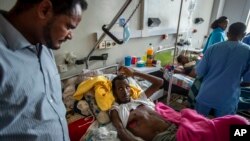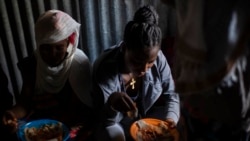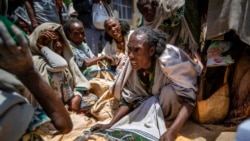Doctors in Ethiopia’s Tigray say shortages of medical equipment and drugs due to the government’s monthslong blockade on the region are causing patients to die of preventable causes.
Doctors at Ayder Referral Hospital in Mekelle, the region’s largest, also cite shortages of intravenous fluids and oxygen. They said in a statement Tuesday that the supply shortages have made surgery and essential procedures “almost impossible” for the past six months.
"As a result, children who needed shunt surgeries are left to die, those with treatable cancers are denied their rights and those with fractures are forced to wait while being immobilized," they said.
According to Reuters, the hospital’s doctors identified 117 deaths and dozens of complications, such as infections, amputations and kidney failure, that were connected to shortages of essential medicine and equipment.
A senior doctor said that 80% to 90% of Tigray’s hospitals and clinics were not functioning.
Doctors attribute the dire situation to what the U.N. and U.S. have described as a de facto government blockade on the region.
The northern Tigray region has been wracked by war since November 2020, following months of rising tensions between the government of Prime Minister Abiy Ahmed and the region’s ruling party, the Tigray People’s Liberation Front (TPLF).
Thousands of deaths
Fighting between the central government and Tigrayan forces has resulted in the deaths of thousands and forced millions of civilians from their homes.
Since the onset of fighting, concern about humanitarian access to the region and its supplies of medical resources and equipment has increased.
Access to the region continued during the first eight months of conflict, when it was under government control. However, once the government withdrew in June, access drastically declined, according to reports from the U.N. humanitarian agency, OCHA.
A report from the agency said no trucks carrying humanitarian aid had been able to enter the region since December 14. As a result, the situation in Tigray continues to worsen, with over 90% of the population, or 5.2 million people, in need of humanitarian assistance, according to OCHA.
While three main routes exist into the region, bridges along two of them were blown up during the Ethiopian military’s withdrawal, according to OCHA reports.
Reuters said convoys using the remaining land route through the Afar region have dealt with long security checks and bureaucratic delays that can last weeks. OCHA has also said authorities often do not allow fuel and medication to pass through.
Despite the situation, the Ethiopian government has repeatedly denied responsibility. Government spokesman Legesse Tulu on Monday again stated that the government has not imposed a blockade on Tigray, according to Reuters.
"What is happening in Tigray currently is the sole responsibility of TPLF," he said.
Trading accusations
Legesse accused the TPLF of looting equipment and medicine from over a dozen hospitals and 100 health centers when its forces invaded the Amhara and Afar regions, which neighbor Tigray, last year before being pushed back in December.
The TPLF, however, has rejected such claims and points to the government for the region’s shortages in humanitarian supplies.
Without fresh supplies and medicine, hospitals will continue to struggle, a situation made more serious considering the famine-like conditions across Tigray.
Reuters reported that the percentage of children under 5 admitted to Ayder Referral Hospital with severe malnutrition nearly doubled to over 41% in October. However, doctors are not properly equipped to treat those patients because of shortages in therapeutic food and other critical supplies.
One year ago, about 82% of essential drugs were available at the hospital, compared with 17.5% at the end of 2021, according to hospital documents obtained by Reuters.
News of the situation in Tigray comes as U.S. Horn of Africa envoy Jeffrey Feltman is scheduled to visit Ethiopia on Thursday to meet with senior government officials to discuss peace talks, according to Reuters.
The U.S. has repeatedly called for both an end to the conflict and the human rights abuses and violations that have been committed since its start. It has also advocated increased humanitarian access to the country’s affected regions.
Feltman’s visit to Addis Ababa is the country’s latest attempt to facilitate a resolution to one of Africa’s bloodiest conflicts.
Some information for this article came from Reuters and AFP.











